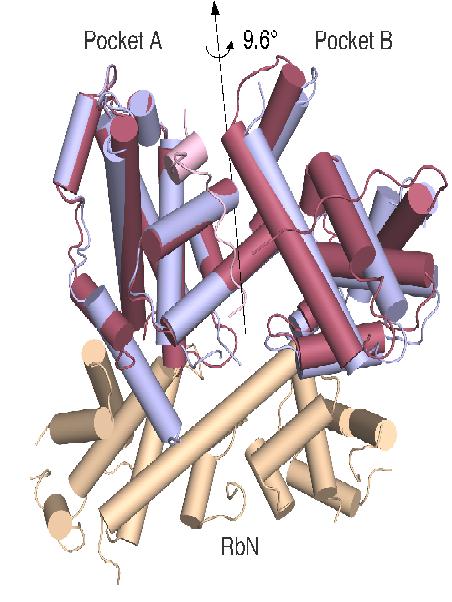A Direct Molecular Inhibitor Of Retinoblastoma Protein Inactivation
Background
The Retinoblastoma tumor suppressor protein (Rb) negatively regulates cell proliferation and the cell cycle through inhibition of E2F transcription factors. E2F transcription factors are a group of genes that are involved in cell cycle regulation and synthesis.
Cancer cells almost invariably have genetic alterations of Rb pathway components that alter normal cell cycle function.
In the past many of the efforts in controlling the effects of Rb mutations has focused on design of therapeutic Cdk inhibitors. Several small molecule ATP-competitive inhibitors have been designed that efficiently inhibit Cdk activity, but new therapeutics are always necessary.
Technology Description
Researchers at UCSC have invented peptides that prevent inactivation of the Rb protein with molecules. These molecules are intended to inhibit E2F release even when Rb is phosphorylated by kinases.

Image 1: Structural comparison of inactive Rb (gold and blue) and active Rb (red). Phosphorylation induces an interdomain interaction that allosterically distorts the structure of the E2F-binding site.
Some of the peptides include D-amino acids rather than more typical L-amino acids.
Applications
Cancer therapeutics
Intellectual Property Information
| Country | Type | Number | Dated | Case |
| United States Of America | Issued Patent | 9,573,977 | 02/21/2017 | 2012-681 |
| United States Of America | Issued Patent | 9,365,621 | 06/14/2016 | 2012-681 |
| Patent Cooperation Treaty | Published Application | WO 2013/155360 | 10/17/2013 | 2012-681 |
Related Materials
Contact
- Jeff M. Jackson
- jjackso6@ucsc.edu
- tel: View Phone Number.
Other Information
Keywords
Retinoblastoma, Tumor Suppressor Protein, Cell Cycle Inhibition, Transcription Factors, Cell Cycle Regulation, Protein Targeting, D-amino acids
